A Bloodhound Lab mix puppy is usually friendly, energetic, and affectionate. Though the two purebred parents look quite different to one another, their puppies will grow up to be large dogs with short, dense fur. But, specific traits will vary from one puppy to the next depending on exactly which traits they inherit.
This mix can suit active homes, or owners who are looking to do scent work or retrieving games with their dogs. But, they are usually heavy shedders and have a tendency to drool – especially if they inherit the Bloodhound’s saggy, wrinkled face!
Bloodhound Lab Mix at a Glance
| Height: | 21.5 – 27 inches |
| Weight: | 55 – 110 lbs |
| Colors: | Black Yellow Chocolate Red Black and tan Liver and tan |
| Fur type: | Short and dense |
| Temperament: | Intelligent, inquisitive, affectionate |
| Shedding: | Moderate to high |
| Activity level: | High |
| Lifespan: | 8 – 12 years |
| Puppy cost: | $500 – $1200 |
Bloodhound and Lab Mix History
As mixed breeds go, the combination of Bloodhounds and Labs is pretty recent and still quite uncommon. It’s highly likely that the two breeds have been accidentally bred through history. But, as an intentional cross, the Bloodhound Lab mix has likely emerged over the past decades or so, on the back of the general mixed breed trend.
To get a better idea of this mix’s history, it’s best to look at the purebred parents. Both Labrador Retrievers and Bloodhounds are old breeds that are competent and familiar with working alongside humans.
Labradors descent from retrieving dogs in Newfoundland, Canada, where they worked alongside fishermen. Since then, they’ve worked as retrievers, police dogs, guide dogs, and more. Bloodhound history centers around their scenting ability. They have worked alongside police, but are common family pets nowadays.
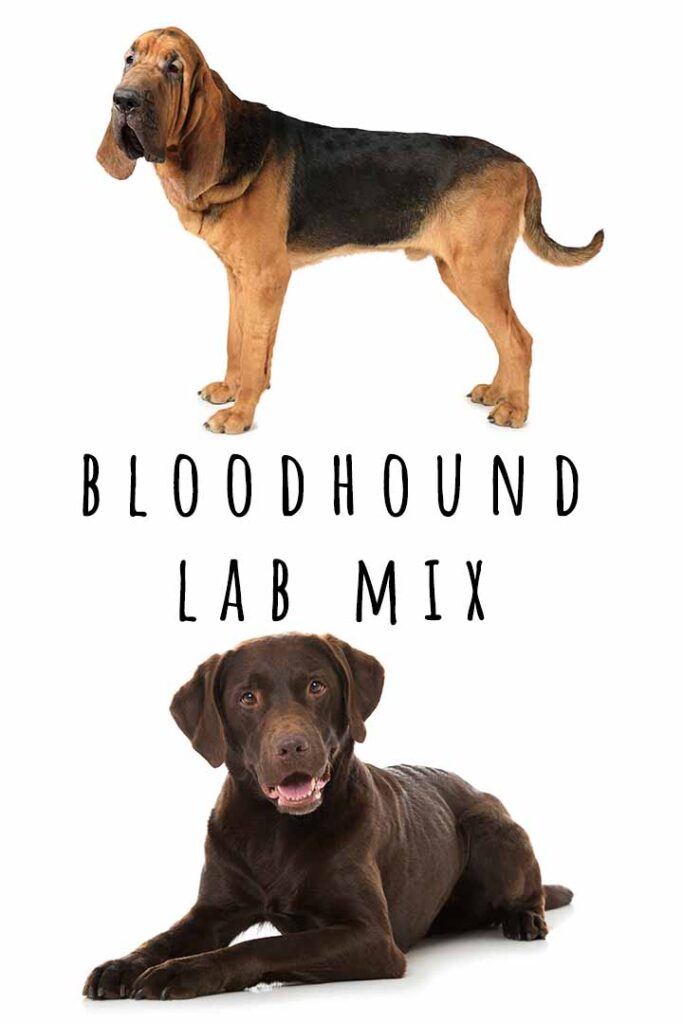
Labrador Bloodhound Mix Appearance
Mixed breed dogs like the Bloodhound Lab mix can inherit any trait from either parent. And this means puppies can be quite varied, even those from the same litter. There’s no way of guaranteeing which trait a puppy inherits until they’ve arrived. So, you must be prepared for any potential outcome.
In general, you can expect a Bloodhound Lab mix to have a short, dense coat – since both parent breeds share this trait. They will have a long, slightly curved tail, which could be thin like the Bloodhound or an otter-tail like the Labrador. And, they may have the same wrinkled, drooping excess skin on their face as the Bloodhound parent.
How Big Do Bloodhound Lab Mixes Get?
Both the purebred Bloodhound and the purebred Lab grow to be large dogs, so a Bloodhound Lab mix will be a large dog too, when they’re fully grown. Generally, females will be smaller than males. But, they can be anywhere between the potential extreme heights of their parents.
Labradors tend to grow to between 21.5 and 24.5 inches tall, weighing 55 to 80 lbs. Bloodhounds are usually larger, ranging from 23 to 27 inches tall and 80 – 110 lbs in weight. So, you can expect mixed breed puppies to be between 22 and 27 inches tall, weighing anywhere from 55 to 110 lbs in weight.
Bloodhound Lab Mix Colors
Like all other traits, these mixed breed dogs can inherit any potential coat color that appears on their two parent breeds. The Labrador parent comes in three colors: black, yellow and chocolate/liver. Bloodhounds come in red, black and tan, or liver and tan. Breeders may choose parents based on their color to increase the likelihood of those colors in puppies, for instance, breeding a black Lab bloodhound mix in the hopes of getting black or black and tan puppies.
Bloodhound Lab Mix Temperament
Temperament and natural instincts can also pass down from parent breeds. For instance, Labradors tend to have strong retrieving instincts, whilst Bloodhounds often follow their nose when outside, getting stuck on scent tracks! A Bloodhound Lab puppy could inherit either of these tendencies.
Generally this mix is friendly and affectionate when socialized properly. Labradors are famed for getting along with everyone – adults, kids, strangers, family members, other animals, and so on. Bloodhounds may be less patient around children, strangers, and other animals. So, it’s important that this mixed breed puppy is socialized from a young age to reduce fearfulness and aggression.
This mix doesn’t tend to be overly protective. Instead they are affectionate, inquisitive and playful. They are very people oriented and won’t suit homes where they are left alone for long periods.
Bloodhound Lab Mix Training and Exercise
Both parents for this mix are large, active dogs, so it’s almost certain that their puppies will grow to be the same. They will need daily exercise, whether in the form of hiking, swimming, retrieving, or even scentwork. Scentwork and many other similar dog sports will provide some much needed mental stimulation, as well as exercise. As intelligent dogs, mental stimulation is just as necessary in order to prevent boredom and its associated destructive behaviors.
The Bloodhound Lab mix will likely take well to training. Positive reinforcement methods work best with this breed, as they will build on the strong bond between you and your dog. And, this mix tends to be quite food motivated, so will be very eager during training. Consistency is key, so make sure to establish good training habits! For more help with this, you might want to take a look at our online training courses.
Bloodhound Lab Mix Health and Care
Like all other traits, a Bloodhound and Lab mix will be prone to any hereditary health issues that are seen in its purebred parents. Here are some to be aware of:
- Hip and elbow dysplasia
- Arthritis
- Gastric Dilatation Volvulus
- Obesity
- Ear infections
- Skin problems
The wrinkled skin common on the Bloodhound parent’s face is particularly prone to skin infections and problems. Moisture or bacteria that collects in these folds can multiply quickly. So, during grooming sessions, you will need to take particular care in these areas. Make sure any wrinkled skin is cleaned regularly and always dried thoroughly after bathing.
Some of these problems are linked to your dog’s large size, but many can be avoided with health testing. Breeders can test for common problems, and reputable breeders won’t breed from dogs with any of the above issues.
How Long Do Bloodhound Lab Mixes Live?
The best way to judge a mixed breed dog’s potential average lifespan is to consider that of its purebred parents. Labradors tend to live around 12 years on average. But, studies have found the median lifespan of Bloodhounds to be much shorter, at just under 7 years.
This doesn’t mean your Bloodhound Lab mix is destined to have such a short life. The same study found that some Bloodhounds lived as long as 12 years. And, other studies have shown that mixed breed dogs live longer, on average, than purebred dogs. So, it’s highly like that a Bloodhound Lab mix will live to 12 years and above.
Are Bloodhound Lab Mixes Good Family Pets?
The Bloodhound and Lab mix is a large, inquisitive and intelligent dog breed. But, they won’t suit every home. They need plenty of exercise and mental stimulation every single day, as well as regular training and early socialization. Though their fur is short, they do have quite complex grooming needs, especially if their face is more wrinkled than not.
Since they are a mixed breed, it’s hard to predict exactly what a Bloodhound Lab mix will be like. So, owners must be prepared for any outcome. This can mean that the exact appearance, temperament, and even care needs of your dog will vary. But, they are social dogs that need plenty of space and regular company.
Bloodhound Lab Mix Puppies
If you’ve decided that this is the mix for you, it’s important to find a reputable breeder. Reputable breeders will only breed from the healthiest dogs, to give your puppies the best chance at life. Make sure to see evidence of health tests when you visit the puppies in person. You should also take a look at where the puppies are kept and meet the mother dog, if not both parents.
The best breeders will breed from friendly, confident dogs and will keep their dogs and puppies as a much loved part of the family. If puppies or dogs ever look malnourished, sick, or if the mother is aggressive, it’s best to look elsewhere.
Since this mix is quite uncommon, it may be hard to find puppies. Prices generally range from $500 to $1200, but will vary depending on demand, location, puppy color, and more. You may need to go on a waiting list if there are currently no puppies available near you.
Bloodhound and Lab Mix Rescue
Another alternative to puppies from a breeder is to look for Bloodhound Lab mix rescue dogs. This mix isn’t very common, but there’s a chance you’ll find puppies or older mixes up for adoption. Some places may not know the exact parentage of their dogs, but many will be able to take an educated guess.
Rescue dogs are often cheaper than puppies, but you won’t know as much about their early life. They may not be well socialized, and may have some complicated care needs or behavioral problems. So, work with shelter staff to find the best match for you. If you cannot find one of these mixes in a general shelter, check rescue centers specific to the purebred parent breeds. Many of these places will accept mixed breed dogs as long as one parent is the relevant breed.
Similar Breeds
If you’re considering the Bloodhound Lab mix, you may also want to take a look at these similar breeds:
- Great Pyrenees Black Lab Mix
- Black Lab Rottweiler Mix
- Mastiff Lab Mix
- Black Mouth Cur Lab Mix
- Kelpie Lab Mix
Bloodhound Lab Mix – A Summary
The Labrador Bloodhound mix is uncommon but slowly growing in popularity! What do you think of this interesting mix? Is it the right choice for your home? If you already have one of these dogs at home, we would love to hear about them in the comments!
References and Resources
- Adams, V. (et al), ‘Methods and Mortality Results of a Health Survey of Purebred Dogs in the UK’, Journal of Small Animal Practice (2010)
- Howell, T. (et al), ‘Puppy Parties and Beyond: The Role of Early Age Socialization Practices on Adult Dog Behavior’, Veterinary Medicine: Research and Reports (2015)
- Keijser, S. (et al), ‘Quantification of the Health-Status of the Dutch Labrador Retriever Population’, Preventive Veterinary Medicine (2019)
- Farrell, L. (et al), ‘The Challenges of Pedigree Dog Health: Approaches to Combating Inherited Disease’, Canine Medicine and Genetics (2015)
- Evans, K. & Adams, V. ‘Mortality and Morbidity due to Gastric Dilatation-Volvulus Syndrome in Pedigree Dogs in the UK’, Journal of Small Animal Practice (2010)
- Urfer, S. (et al), ‘Risk Factors Associated with Lifespan in Pet Dogs Evaluated in Primary Care Veterinary Hospitals’, Journal of the American Animal Hospital Association (2019)
The Labrador Site Founder
Pippa Mattinson is the best selling author of The Happy Puppy Handbook, the Labrador Handbook, Choosing The Perfect Puppy, and Total Recall.
She is also the founder of the Gundog Trust and the Dogsnet Online Training Program
Pippa's online training courses were launched in 2019 and you can find the latest course dates on the Dogsnet website

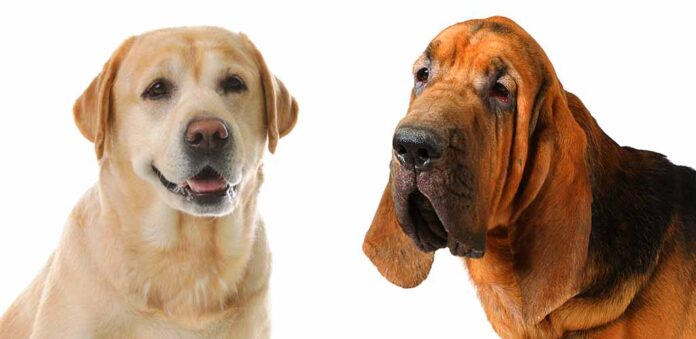






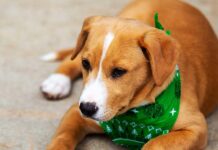
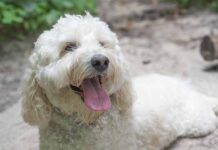
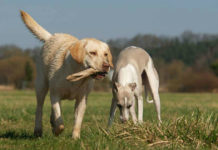









My lab bloodhound is 11 years old next month aug 24. She’s the most intelligent dog we’ve ever owner. Very dependable and absolutely amazing in my mum’s dementia care home where she’s incredibly popular. She’s still incredibly fit and can go for miles. Took her time getting to love our new springador after loosing her lifetime springador brother but she now’s plays chase with him but keeps him under control. She was only £50 when we got her. Sadly she has an abscess on her side that is growing but the vet doesn’t want to operate due to her age and she’s full of lumps and bumps but when the sun shines and you tell her she’s off to the beach she’s the happiest girl around and we don’t want to ever be without her.
I have a bloodhound/chocolate lab mix that we adopted. I had her DNA tested so we know she is 53% bloodhound and 47% lab. She is such an amazing dog. She will be 5 months old in 2 weeks. Smart as a whip. We brought her home at 10 weeks and it only took me maybe a week to potty train her. She rings a bell at the door when she has to go out. I will say she HATES her crate. That is the only thing that we have a problem with. But she sits, gives her paw, lays down, rolls over, comes, and even knows what I mean when I tell her we are going to work (I own a flower business and she comes with me every day) and she knows what I mean when I tell her we are going to feed the horse. I have always had dogs but this one is by far the smartest I have ever had. I also have a cane corso/black lab mix and an American Staffy.
I just got a dog that I beleave is a yellow lab and bloodhound mix ,she is 3 1/2 years old and a true lover .I use her as a tharipy dog in the care home that my wife is in and she is loved by everyone and well recived by all the people.
I have a blood hound black lab mix,she is three months old and is a very good dog so far but potty training isn’t going so well,she is walked several times a day and would still rather pee in the house,she already knows a lot of tricks and commands but like I said the potty training is awful,any advice would be greatly appreciated.thanks
I have a lab bloodhound, he’s 5 months old he’s blonde with black muzzles and eyes, his face is all bloodhound along with his tail. He’s such a sweet boy and we’re working on retrieving his duck toy and do lite scent work. I wouldn’t trade him for anything
We adopted a lab/coonhound mix puppy at 8 weeks old. She is black with a white patch on her chest but in sunlight and on dreary days we can see brownish red shadowing.
She’s a beautiful dog and very active. At 4 months old we decided to do a DNA test on her… she is 50%Lab, 29%Bloodhound & 21% Treeing Walker.
She loves attention and food!
At 7 1/2 months she weighs 71#
She is very active, and also scent driven!
She loves to play fetch. A definite chewer.. anything from paper to plastic handles off of her treat puzzles..and Loves treats!!
She’s great at letting us know when anyone comes in the drive and also any strange noises. She’s a great indoor dog but does shed. We have a rescue cat who we’ve had for years and doesn’t like our dog but who knows.. maybe some day!?
It seems we have to have nails trimmed and glands expressed monthly.
She’s a great healthy happy dog who loves our grandkids ages 4-11..she waits at the door every morning for the 4 year old to be dropped off! They are best friends, but even he gets tired of playing fetch with her!
Great dog, very active and food & scent driven.. no idea how much bigger she will get but we love her so much!
Wouldn’t trade her for the world!